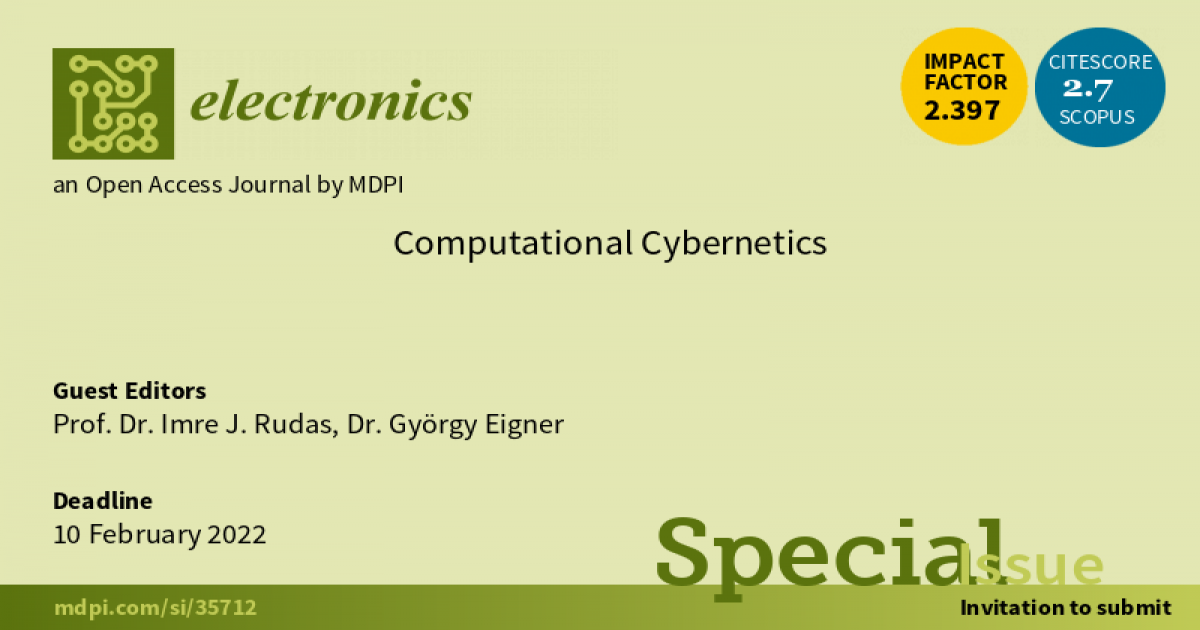- 2.6Impact Factor
- 6.1CiteScore
- 17 daysTime to First Decision
Computational Cybernetics
This special issue belongs to the section “Systems & Control Engineering“.
Special Issue Information
Dear Colleagues,
Computational cybernetics (CC) is the synergetic integration of cybernetics and computational intelligence. Computational cybernetics covers the areas of system of systems, biological and physiological systems, signal processing, information technology, and the theory of complex systems and computer sciences, where the application of advanced solutions of artificial intelligence, control theory, concepts and demands of Industry 4.0 and intelligent robotics is becoming a must these days. The purpose of this Special Issue is to provide a wide range introduction of the latest developments on the field of computational cybernetics through specific applications of the advanced methodologies in practice.
The papers considered for possible publication may focus on but not necessarily be limited to the following areas:
- Machine learning techniques in robotics, IoT, and manufacturing industries;
- Advanced control and estimator solutions for industrial, physiological systems;
- Application of the fuzzy theorem on the field of computational cybernetics;
- Machine learning, deep learning, and reinforcement learning in computational cybernetics;
- Novel applications and case studies related to computational cybernetics.
Prof. Dr. Imre J. Rudas
Dr. György Eigner
Guest Editors
Manuscript Submission Information
Manuscripts should be submitted online at www.mdpi.com by registering and logging in to this website. Once you are registered, click here to go to the submission form. Manuscripts can be submitted until the deadline. All submissions that pass pre-check are peer-reviewed. Accepted papers will be published continuously in the journal (as soon as accepted) and will be listed together on the special issue website. Research articles, review articles as well as short communications are invited. For planned papers, a title and short abstract (about 250 words) can be sent to the Editorial Office for assessment.
Submitted manuscripts should not have been published previously, nor be under consideration for publication elsewhere (except conference proceedings papers). All manuscripts are thoroughly refereed through a single-blind peer-review process. A guide for authors and other relevant information for submission of manuscripts is available on the Instructions for Authors page. Electronics is an international peer-reviewed open access semimonthly journal published by MDPI.
Please visit the Instructions for Authors page before submitting a manuscript. The Article Processing Charge (APC) for publication in this open access journal is 2400 CHF (Swiss Francs). Submitted papers should be well formatted and use good English. Authors may use MDPI's English editing service prior to publication or during author revisions.
Keywords
- computational intelligence
- computational cybernetics
- machine learning
- deep learning
- control and estimation theorems
- intelligent robotics
- fuzzy systems
- adaptive systems
- operational systems

Benefits of Publishing in a Special Issue
- Ease of navigation: Grouping papers by topic helps scholars navigate broad scope journals more efficiently.
- Greater discoverability: Special Issues support the reach and impact of scientific research. Articles in Special Issues are more discoverable and cited more frequently.
- Expansion of research network: Special Issues facilitate connections among authors, fostering scientific collaborations.
- External promotion: Articles in Special Issues are often promoted through the journal's social media, increasing their visibility.
- e-Book format: Special Issues with more than 10 articles can be published as dedicated e-books, ensuring wide and rapid dissemination.

